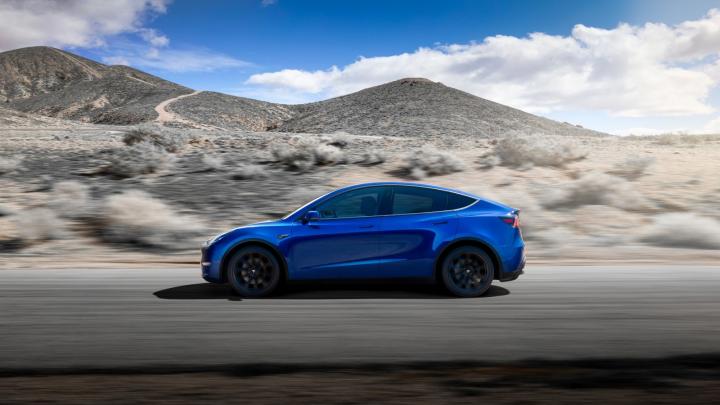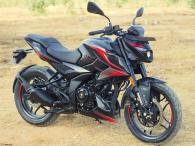News
Tesla unveils all-electric Model Y crossover
Thanks to BHPian carmayogi for sharing this information with other enthusiasts.
Tesla has just taken the covers off its new Model Y Crossover-SUV at an event in California. This car represents the completion of the rather amusingly named Tesla line-up with the S, 3, X and now Y spelling out a word that makes the inner child inside Elon Musk giggle. If you haven’t gotten it already, he wanted the Model 3 to be the Model E. For those of us less interested in such humour and more interested in cars, the question is this: What is this vehicle and what does it mean for Tesla?
The Backstory
Tesla is the world’s largest producer of battery electric vehicles and of the batteries that go into them. 2018 was arguably the most chaotic year in their relatively brief history as a company. During this past year, Tesla has ramped up production of the Model 3 sedan and catapulted from a niche high-end brand to a relatively mass market one. To put things into perspective, the Model 3 is in the identical price bracket to the BMW 3 series here in the United States.
Producing a car en-masse is something that Tesla has struggled with. Naturally, the likes of Toyota and Honda did not get where they are overnight. Tesla faced numerous problems with speeding up production and controlling costs. Towards the end of the year, they struggled with deliveries and logistics of getting cars to everyone. By the time 2018 wound to a close and the dust settled, Tesla emerged with approximately 140,000 Model 3s sold in the United States. The second best selling car of that size and price was the Mercedes-Benz C-Class. That sold just over 60,000 units in the same time period. Whichever way you paint it, the year was a staggering success. Any company that outsells thoroughly capable and compelling vehicles like the C-Class, the BMW 3 Series and the Audi A4 deserves a pat on the back. To add to this, Tesla posted their first back-to-back quarterly profits ever, although the year was still loss making as a whole. During the Model Y launch, Elon Musk made it a point to mention that Tesla has produced around 550,000 cars, something he seemed very proud of.
Crossover Mania
While all of the above sounds rather good, the US is SUV crazy. At the same time, the Compact SUV/Crossover market is literally on fire in the global market. India is no exception with the likes of the Hyundai Creta and Jeep Compass getting more love from the market than similarly sized and priced sedans. In the US market, Crossovers accounted for 38.5% of sales in 2018 compared to just 13% for “Small” cars and 10.9% for “Mid-sized” cars. Tesla’s launch is thus positioned to take it to even greater heights as the dominant player in the global electric car market. The use of inverted commas is not accidental - the American definition of sizes is a fair bit larger than what counts for small in India!
What Is The Tesla Model Y?
The Tesla Model Y is a 5 or 7 seat Compact Crossover/SUV based on the same platform as the Model 3. You can essentially call it a raised Model 3 - it certainly looks that way. To these eyes, it looks rather good, managing to do the coupe-crossover better than many previous attempts by other companies. That said, it does look a bit too much like the Model 3. We can only guess that the different shape and silhouette will help people differentiate the two.
Between the Models S & X, Tesla’s larger sedan and SUV, part sharing was less than desirable, mostly restricted to the powertrain. However, the Models 3 & Y share 75% of their components with body being the only major difference. Mechanicals, electronics, interior trim and the giant center screen are all identical. This of course is nothing new in the industry. The Audi A4 and Q5 share a similar platform, for example. This also immediately identifies where the Model Y fits on the automotive food chain - it is meant as a direct competitor to the Audi Q5, the BMW X3 and the Mercedes-Benz GLC - cars that us Team-Bhpians are very familiar with. It will also compete with recently launched electric SUVs in the form of the Jaguar i-Pace, the Audi e-tron and the Mercedes-Benz EQC.
Under The Hood
Well, amusingly, there’s actually nothing under the hood of the Model Y, or in fact any Tesla. You will find the ‘frunk’ or front trunk - an additional storage area good for a few soft bags or your charging cables.
Jokes aside, as an electric vehicle, the Y has either one or two rather small, but immensely powerful motors, depending on the model. The performance numbers are all ridiculous for a compact SUV and result in 0-100 km/h times of between 3.5 and 6.0 seconds. What truly sets electric vehicles apart is the instantaneous response you get. Forget turbo lag, there’s not even any throttle lag to speak of. We fully expect the Model Y to follow these same traits that have made Tesla cars the stars of numerous YouTube videos and drag races.
The juice for these motors comes from the battery pack located in the middle of the car. Like many new electric platforms, this involves a sort of skateboard between the front and rear wheels, which allows the batteries, and weight, to sit quite low in the vehicle. At launch, the Model Y appears to be equipped with the same battery options as the Model 3, which ranges from 50 to 75 kWh in capacity. There is, however, no mid-range option like in the Model 3, so it is likely that the base model will be equipped with a 62 kWh battery pack instead. These details are yet to be announced officially by Tesla.
Pricing and variants
At launch, these are the prices announced.
- Standard Range, 230 miles, $39,000, 0-60 mph in 5.9 seconds
- Long Range, 300 miles, $47,000, 0-60 mph in 5.5 seconds
- Dual Motor Long Range, 280 miles, $51,000, 0-60 mph in 4.8 seconds
- Dual Motor Performance, 280 miles, $61,000, 0-60 mph in 3.5 seconds
- A seven-seat option is available at $3000 extra
Other Important Details
- Drag coefficient of 0.23 cd: Almost unheard of low number for an SUV
- On sale now for $2500 reservations in the US
- Late 2020 production for higher priced version, 2021 for standard range.
- Supercharging V3 capable, up to 250 kW peak charging
- Autopilot & Full Self Driving hardware available
Autopilot
You cannot talk about Tesla without mentioning their Autopilot semi-autonomous driving capability. Currently, their cars can manage highways fairly well, managing speed, distance from other cars and lane keeping. The Model Y is equipped with all the latest features from the company and if Elon Musk’s timeline holds true then Full Self Driving capability will roll out by the end of 2019.
It is very important to note that this capability does not imply a fully ready system. It simply means that the hardware can do the job. Meanwhile, as Tesla collects data from all its cars, the software will keep receiving updates, as they are able to ‘train’ their system better and better. As of the writing of this post, whenever a human intervenes or takes over from the autopilot, Tesla receives a log with all the information and video from that specific incident. This allows them to train the vehicle to manage all different types of scenario. Tesla has a huge data mining operation from their cars and it stands to reason that the system will continue to improve as more cars hit the road.
Over-The-Air Updates
One of Tesla’s undoubted strengths is their ability to update vehicles Over-The-Air (OTA). OTA updates mean that small changes and improvements can be made to correct issues or improve features and functionality. A great example of this is when, earlier in 2018, Tesla were able to update a car being tested by Consumer Reports to improve its braking performance after the reviewers found it to be satisfactory, but not good. The subsequent test, post update, received a good rating. This is an absolutely crazy thought for a regular car owner. No car on the road today gets better as it gets older. Over the course of 2018, Tesla has added security features, hidden ‘Easter eggs’, autopilot improvements and has even managed to improve the efficiency of the RWD version of the Model 3 through software tweaks. This is a paradigm shift in the way cars are sold and maintained.
Charging
This is an interesting topic for all electric cars and something that Tesla is clearly leading the way with. Using an electric car is a different ballgame than the regular petrol or diesels. With the available range being many times more than most daily drives, you simply plug in your car at home and let it charge overnight. This means you always have a ‘full tank’ in the morning to go about your business, a supremely convenient way of getting around.
Where EVs face a challenge is on long distances and this is something that Tesla have been able to address for the most part. To start off, Teslas are currently class leaders in efficiency, thus able to easily cover 350-450 km between charges. That is most likely as far as a normal person would drive without a stop for food, restrooms and a good stretch. One could argue that it is healthy to stretch after 4 hours of continuous driving. In the US, Tesla has installed its Supercharger network all over the country with the latest available count suggesting 681 stations, each with 4 to 40 chargers, depending on the location. This allows for cross-country driving. At the moment, Tesla’s Supercharger V2 is the commonly available option, providing 120 kW of peak power and allowing for 30-45 minute charge times for typical users. Last week, the V3 version of the charger was announced which promises to halve these times with its 250 kW peak output. 15 to 25 minute stops on long road trips are common in any case, meaning as Tesla rolls out these chargers, long distance driving will become as easy and fast as it would in a petrol or diesel car.
The Bottom Line
The Model Y launch represents another important moment in the history of this disruptive car company. The eccentricities and Twitter habits of their CEO aside, Tesla have truly managed to prove that you can make exciting and capable electric cars while making money. Their entry into the world of crossovers means that buyers across the spectrum from Honda CR-V territory to Porsche Macan territory will be enticed to look at this option as well. Barring any hiccups, the Model Y is widely expected to become Tesla’s best selling vehicle globally as the company continues to push the agenda for electrification and the inevitable death of the internal combustion engine.


























